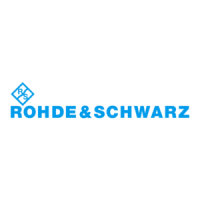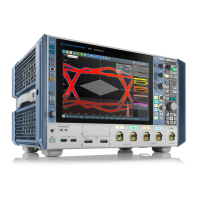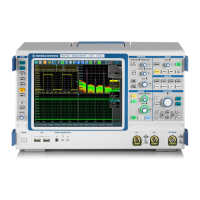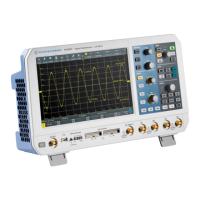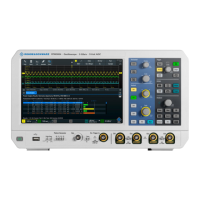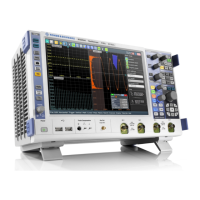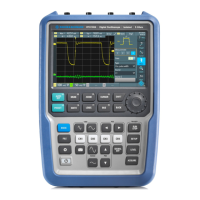Power analysis (option R&S RTE-K31)
R&S
®
RTE
985User Manual 1326.1032.02 ─ 20
●
"Meas 7" to measure the amplitude of the current
●
"Meas 8" to measure the amplitude of the current
●
"C 1 " Cursor 1 to measure gate ["t
0
" ,"t
1
"]
●
"C 2 " Cursor 2 to measure gate ["t
2
" ,"t
3
"]
The used resources are listed in the "Details" tab. See also: Chapter 16.2.3, "Details
tab", on page 966.
The dynamic on resistance displayed as the result is defined as:
The points "t
0
" , "t
1
", "t
2
" and "t
3
" are defined by the cursor lines displayed in the result
diagram of the measurement. You can move the cursor lines to define another area of
interest.
The following remote commands are used for handling the measurement results:
●
POWer:DONRes:RESult:RESistance? on page 1960
●
POWer:DONRes:GATE<m>:STARt on page 1960
●
POWer:DONRes:GATE<m>:STOP on page 1960
●
POWer:DONRes:REPort:ADD on page 1960
16.4.2.2 Configuring dynamic on resistance
For details of the configuration settings, see Chapter 16.4.2.3, "Dynamic on resistance
settings", on page 986.
1. Select "Analysis" > "Power".
2. Under "Switching / Control Loop", select "Dynamic on Resistance".
3. Connect the differential voltage probe and the current probe to the oscilloscope.
4. Deskew the probes as described in Chapter 16.1.1.1, "Auto deskew", on page 955.
5. Connect the probes to the DUT as shown in the "Channels" tab:
Control loop
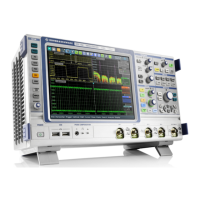
